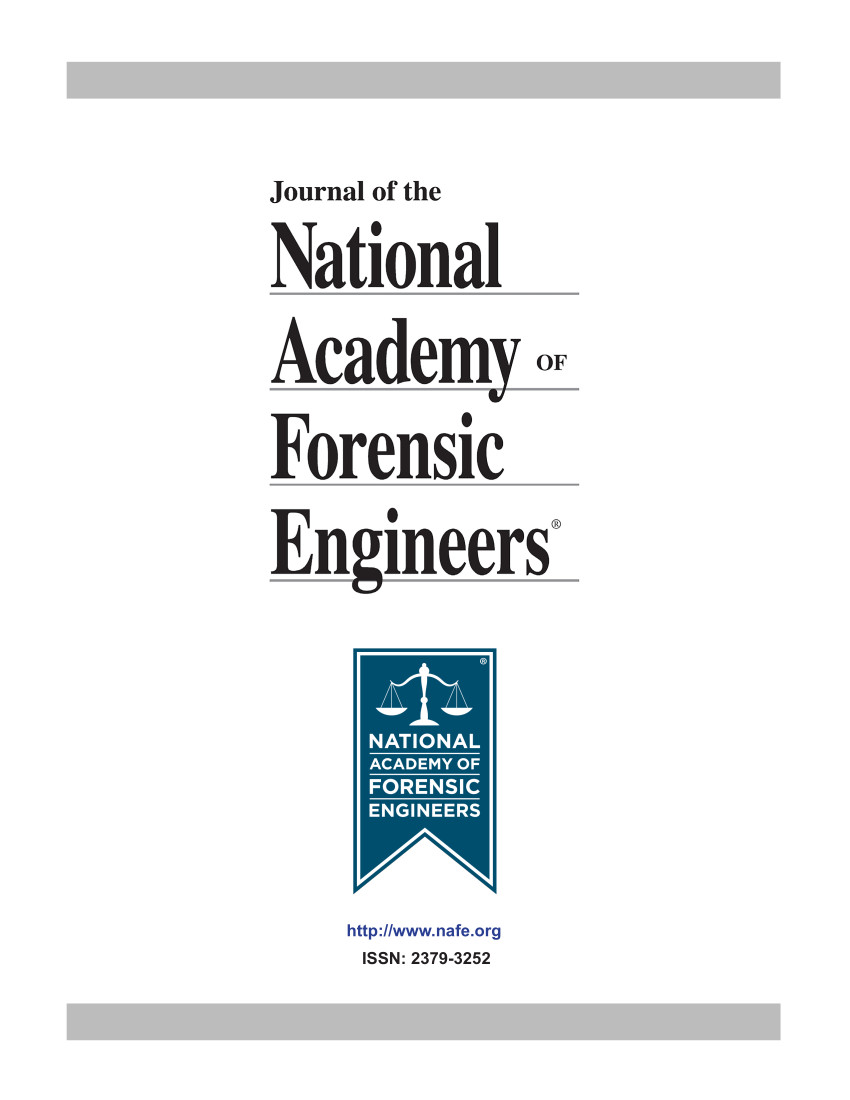Forensic Engineering Analysis Of Pedestrian Trauma Using Biomedical And Accident Reconstruction Engineering Methods
DOI:
https://doi.org/10.51501/jotnafe.v23i2.661Keywords:
Biomedical engineeringAbstract
This Study Examines The Theory And Methods Of Forensic Engineering Analysis Applied To Pedestrian Trauma And Fatality. Optimally Approached With The Collective Analysis Of Both The Accident Reconstruction Engineer And Biomedical Engineer, The Accident Reconstruction Engineer Translates The Physical Evidence Related To The Vehicle And Scene While The Biomedical Engineer Interprets The Physical Evidence Related To The Human Body In The Biological Tissues. With Both Disciplines, A Collaborative Understanding Can Be Gained Using The Vehicular And Human Tissue Physical Evidence Available. The Case Presented Involves A Pedestrian Verses An Automobile. The Collision Between A Pedestrian And Automobile Resulted In The Death Of The Pedestrian. Physical Evidence On The Vehicle Included: A Dent In The Front Right Fender; A Spider Web Glass Fracture Pattern On The Windshield In The Lower Right Comer; And A Dent In The Right A-Pillar. This Study Will Also Demonstrate What Can Be Learned From The Absence Of Classic Physical Evidence On The Vehicle And On The Pedestrian As Well As The Determination Of When A Kinematic Study Is Appropriate For Pedestrian Verses Automobile Investigation.Downloads
Published
2006-01-01
How to Cite
Liptai, Laura L., and Lamb Rowland D. 2006. “Forensic Engineering Analysis Of Pedestrian Trauma Using Biomedical And Accident Reconstruction Engineering Methods”. Journal of the National Academy of Forensic Engineers 23 (2). https://doi.org/10.51501/jotnafe.v23i2.661.
Issue
Section
Articles
License
Copyright (c) 2006 National Academy of Forensic Engineers

This work is licensed under a Creative Commons Attribution-NoDerivatives 4.0 International License.
All rights © Journal of the National Academy of Forensic Engineers.
Full statement regarding the author's license of copyright to the NAFE is shown on the Copyright section of the Submissions Page.






